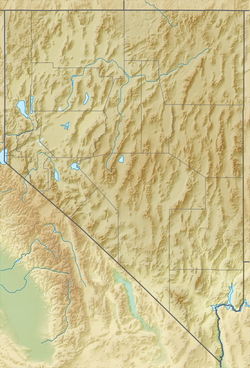| Candelaria Formation | |
|---|---|
| Stratigraphic range: Induan | |
| Type | Formation |
| Lithology | |
| Primary | Shale |
| Other | Limestone |
| Location | |
| Coordinates | 38°06′N118°06′W / 38.1°N 118.1°W |
| Approximate paleocoordinates | 12°06′N41°36′W / 12.1°N 41.6°W |
| Region | Nevada |
| Country | United States |
| Type section | |
| Named for | Candelaria Hills |
The Candelaria Formation is a geologic formation in Nevada, United States. The formation comprises shales and limestones deposited in an open marine environment and preserves fossils dating back to the Induan (Griesbachian to Dienerian) age of the Early Triassic epoch. [1] [2] [3] Outcrops of the Candelaria Formation are present in the Candelaria Hills southeast of the now abandoned mining town of Candelaria (Mineral and Esmeralda counties), and near Willow Springs (Nye County). [2]

